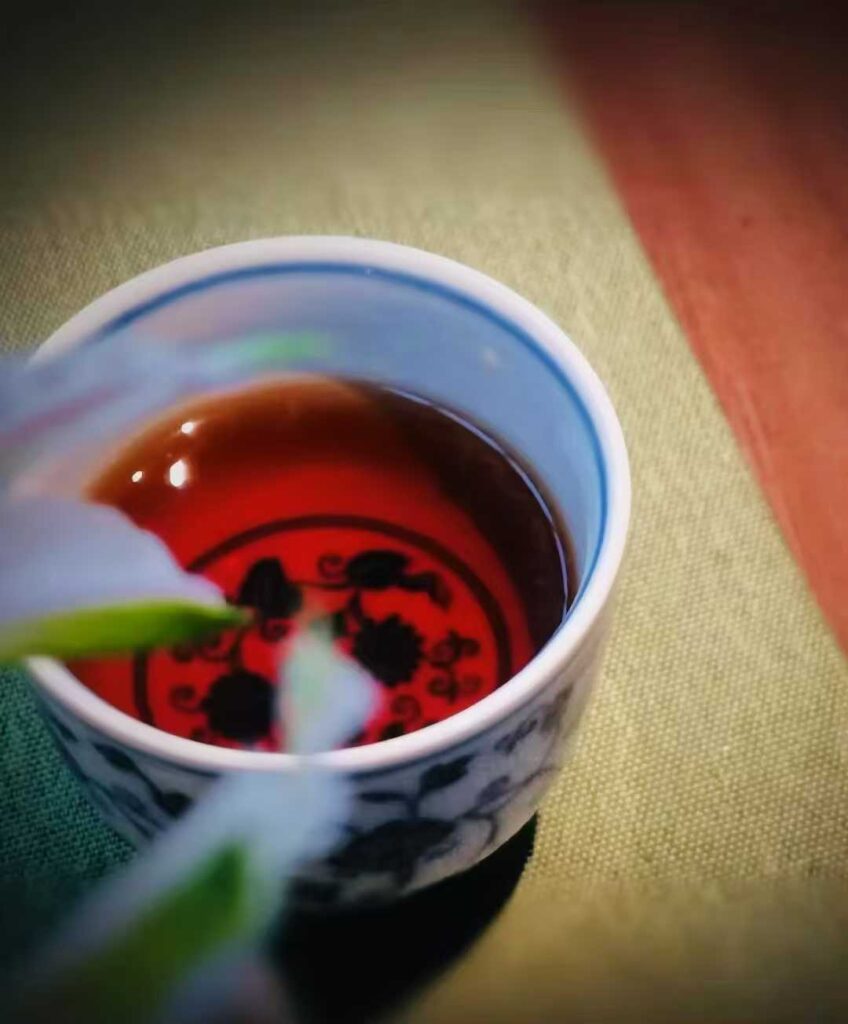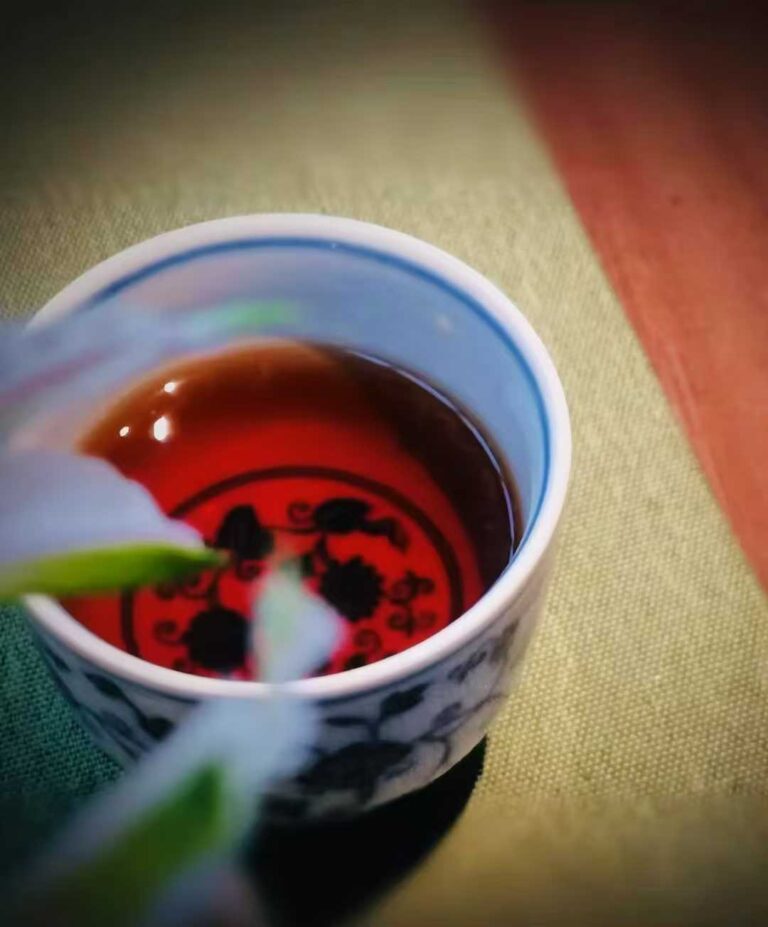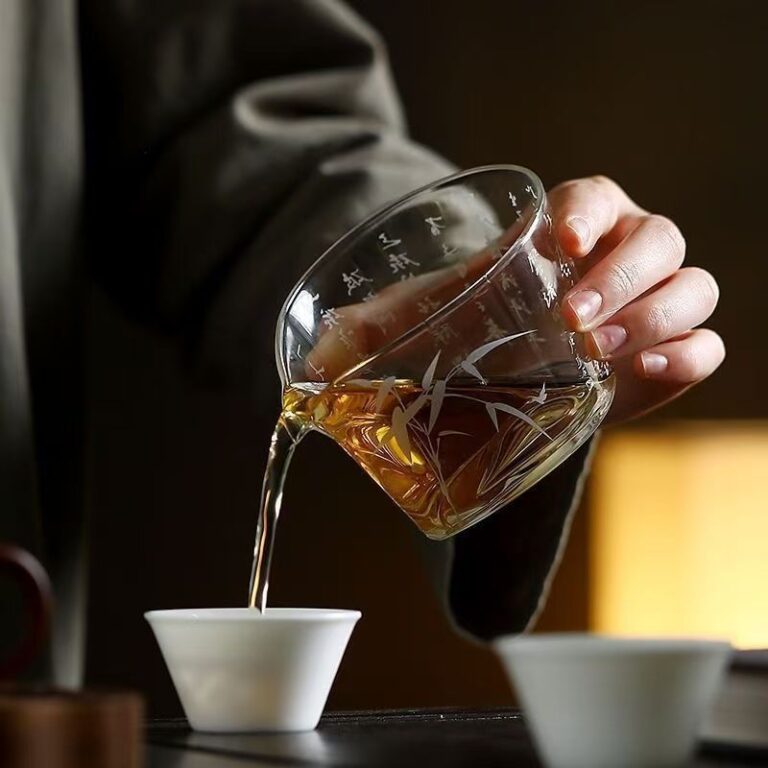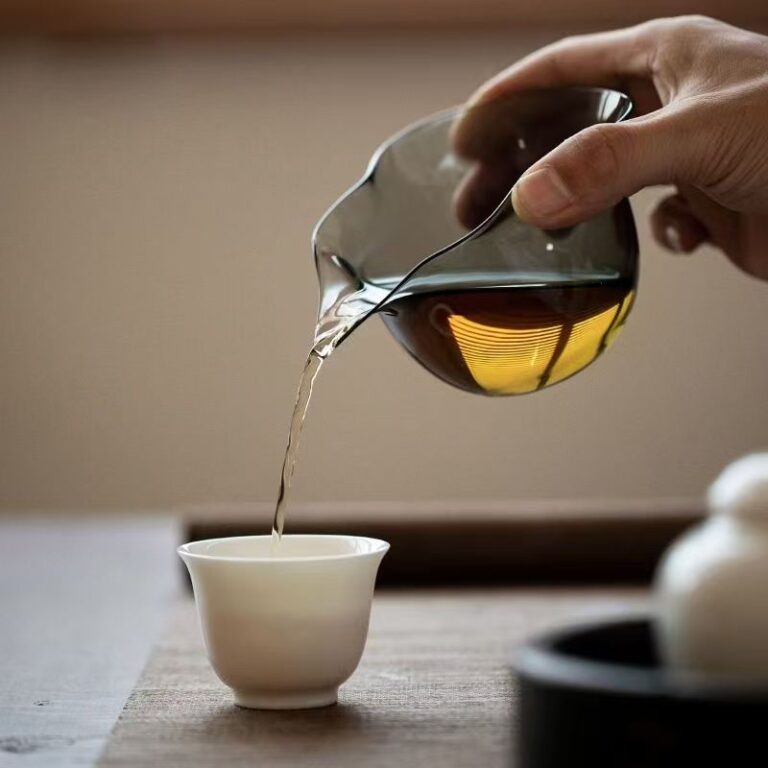Free Shipping On Orders Over $59
Introduction to Pu-erh Tea
Pu-erh tea, originating from Yunnan Province, China, is a unique and highly prized tea known for its distinctive fermentation process. (Learn more about Yunnan’s tea culture and the ancient Tea Horse Road.)
Celebrated for its rich and evolving flavor, Pu-erh also carries remarkable health benefits and a long, storied history. Much like fine wine, Pu-erh improves with age and is classified into two main categories: Raw Pu-erh (Sheng) and Ripe Pu-erh (Shou), each offering its own sensory experience.
The Craft of Pu-erh Tea Production
The making of Pu-erh tea is intricate, involving multiple stages. Different processing methods yield different flavor profiles.
- Harvesting
Pu-erh tea is made from the Camellia sinensis plant, particularly the Yunnan large-leaf variety. The leaves are usually harvested in spring, and some come from wild ancient tea trees that are said to be over a thousand years old. - Withering and Rolling
The leaves are sun-dried to reduce moisture, then rolled and kneaded to break down the cell walls, allowing for a smoother fermentation process. - Fermentation and Post-Fermentation
- Raw Pu-erh (Sheng) undergoes a natural, slow fermentation over time, developing complex, fruity notes as it ages.
- Ripe Pu-erh (Shou) is fermented through an accelerated process called wet-piling, carried out in a controlled environment to create its deep, earthy aroma.(See the Tea Research Institute of China for insights into tea fermentation and microbiology.)
- Pressing and Shaping
After fermentation, both raw and ripe Pu-erh teas are typically pressed into cakes, bricks, or other distinctive shapes for storage and transport.
Varieties of Pu-erh Tea
- Raw Pu-erh (Sheng): When young, it has a fresh, slightly astringent flavor that becomes sweeter and fruitier over time. The aging process can take decades, and well-aged Sheng Pu-erh is highly sought after by collectors.
- Ripe Pu-erh (Shou): Darker, rounder, and mellower than Sheng, Ripe Pu-erh has earthy and woody tones. Its accelerated fermentation makes it ready to drink much sooner.
Health Benefits of Pu-erh Tea
Pu-erh tea is more than a beverage—it’s a lifestyle of balance, health, and calmness. For centuries, Traditional Chinese Medicine (TCM) and folk wisdom have praised Pu-erh as a “tea for well-being.” Its gentle nature makes it suitable for all seasons and most body types.
(Read more from the World Tea Academy about the science behind tea and health.)
1. Aids Digestion and Reduces Greasiness
A cup of Pu-erh after a meal is often called the “natural digestive tea.”
Thanks to its fermentation, Pu-erh contains beneficial microbes and enzymes that help break down fats and stimulate digestion. In regions like Yunnan, Guangdong, and Hong Kong, people have long paired rich, meaty dishes with Pu-erh. Its warm, smooth texture—especially in Ripe Pu-erh—makes it the perfect post-meal tea.
2. Supports Fat Metabolism and Weight Management
Rich in polyphenols, theaflavins, and theabrownins, Pu-erh promotes fat metabolism and reduces fat accumulation.
Regular, moderate consumption helps maintain a healthy weight and balanced metabolism. For modern tea drinkers, a cup of Pu-erh is not just nourishment—it’s a symbol of lightness and mindful living.
3. Promotes Liver and Heart Health
Pu-erh is believed to support liver function and regulate blood lipids.
It helps break down excess fats in the bloodstream, enhances circulation, and reduces cholesterol absorption, making it particularly suitable for people with high-fat diets. Many middle-aged and elderly tea lovers consider Pu-erh part of their daily self-care routine.
4. Antioxidant and Anti-Aging Properties
As Pu-erh ages, it develops unique antioxidants such as theabrownins and vitamins C and E.
These compounds neutralize free radicals, slow cell aging, and help keep skin and organs youthful. “The older, the finer” — aged Pu-erh embodies both health and wisdom gained over time.
5. Strengthens Immunity and Balances the Body
The fermentation process produces probiotics and polysaccharides that balance gut flora and strengthen immunity.
Pu-erh’s gentle, nourishing character makes it ideal for those prone to fatigue, coldness, or humidity imbalance. In winter, it warms the body; in summer, it dispels dampness—making it a tea for all seasons.
6. Calms the Mind and Relieves Stress
Ripe Pu-erh’s deep, earthy aroma evokes peace and grounding.
The amino acid L-theanine in tea helps relax the nerves and ease anxiety. Many tea lovers brew Ripe Pu-erh in the quiet of evening, letting the aroma drift softly through the air—a moment of meditation and self-healing in every sip.
Note of Caution
While Pu-erh offers many benefits, moderation is key.
- Daily dry tea intake: 5–10 grams.
- Avoid drinking on an empty stomach or before bedtime.
- Pregnant or breastfeeding women and people with low blood sugar should drink with care.
As the saying goes: “True wellness lies in balance.”
The charm of Pu-erh tea lies not only in its rich, aged aroma but also in the calm and harmony it represents—gentle, balanced, composed, and healthy.
Storing and Aging Pu-erh Tea
Aging is essential to Pu-erh’s character. Proper storage enhances its complexity.
- Storage Conditions: Store Pu-erh in a cool, dry place with good airflow. Avoid airtight containers, as the tea needs contact with air for proper aging.
- Aging Method: Both Sheng and Shou Pu-erh improve with time. The best containers are unglazed clay jars or breathable paper wraps that protect the tea while allowing it to mature naturally.
Brewing and Enjoying Pu-erh Tea
- Brewing Raw Pu-erh: Use slightly lower temperatures (85–90°C) and shorter steeping times to avoid bitterness.
- Brewing Ripe Pu-erh: Use hotter water (95–100°C); Ripe Pu-erh rarely becomes bitter, so you can adjust steeping time to your taste.
Both types can be steeped multiple times—Ripe Pu-erh, in particular, retains its flavor through 10 to 12 infusions.
This guide offers a complete journey from leaf to cup, revealing not only the intricate craftsmanship of Pu-erh tea but also the depth of culture and wellness it embodies.
Let each sip of this aged, mellow tea remind us of time’s fragrance and the serenity it brings to the heart.




